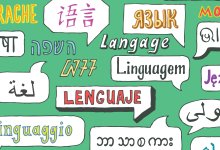English Language Learners
Discover ways to optimize instruction to address the needs of students who are learning English.
How Podcasting in the Classroom Boosts Communication Skills
When students practice their oral communication skills by making podcasts, their writing, speaking, and storytelling abilities blossom.Your content has been saved!
Go to My Saved Content.12 Fun Speaking Games for Language Learners
Every teacher has faced the struggle of encouraging students to speak. Here's a list of a fun activities to get your students to talking.2.1MYour content has been saved!
Go to My Saved Content.Activating Learning by Milling to Music
When students pretend they’re at a fancy party making small talk, a simple brainstorm for writing ideas becomes more lively, more cooperative—and more effective.464.8kYour content has been saved!
Go to My Saved Content.6 Essential Strategies for Teaching English Language Learners
We interviewed educators with decades of experience in teaching ELLs and tapped a network of experts and observers to find the strategies that work.1MYour content has been saved!
Go to My Saved Content.Sentence-Level Scaffolds That Foster English Learners’ Independence and Growth
Teachers can structure supports to guide English learners to speak and write using grade-level, discipline-specific language.7.5kYour content has been saved!
Go to My Saved Content.Making Space for Native Languages in Newcomer Classrooms
When English language learners are given consistent opportunities to practice their home languages in class, their English proficiency flourishes—along with their sense of belonging and identity.Adapting Gradual Release of Responsibility for English Language Learners
This model provides scaffolded active engagement and opportunities for guided practice to help students master new skills.8.2kYour content has been saved!
Go to My Saved Content.Supporting Multilingual Students in the Early Grades
Five ways teachers can celebrate and extend the linguistic expertise of young students who speak two or more languages.209.7kYour content has been saved!
Go to My Saved Content.8 Strategies for Teaching Academic Language
Ideas for developing students’ capacity to understand and use discipline-specific terminology and the language used in instruction.491.2kYour content has been saved!
Go to My Saved Content.Preparing for Cultural Diversity: Resources for Teachers
How can teachers prepare for diverse classrooms? There isn't a definitive answer, but there is a wealth of resources online. Discover some helpful links for teachers.335.2kYour content has been saved!
Go to My Saved Content.Taking a Playful Approach to Assessment
When teachers bring collaboration, creativity, and choice into assessment, anxiety and dread give way to confidence and joy as students show off what they have learned.85.4kYour content has been saved!
Go to My Saved Content.Helping Young Multilingual Learners Develop Their Metacognitive Skills
An educator explains how students can more easily access common supports like visuals, sentence frames, and pair-share.15.4kYour content has been saved!
Go to My Saved Content.Tailoring Instruction to Support English Language Learners
Setting up a self-contained classroom for English language learners bolsters academics and helps students reach fluency faster.64.5kYour content has been saved!
Go to My Saved Content.Do’s & Don’ts for Teaching English-Language Learners
In an excerpt from his book with fellow teacher Katie Hull Sypnieski, blogger Larry Ferlazzo looks at a few basic ways to reach students who are learning English as well as the subject at hand.266.6kYour content has been saved!
Go to My Saved Content.Activating Prior Knowledge With English Language Learners
Students learn better when they first access what they already know—and this plays a big role in improving English language learners’ academic literacy.205.9kYour content has been saved!
Go to My Saved Content.












